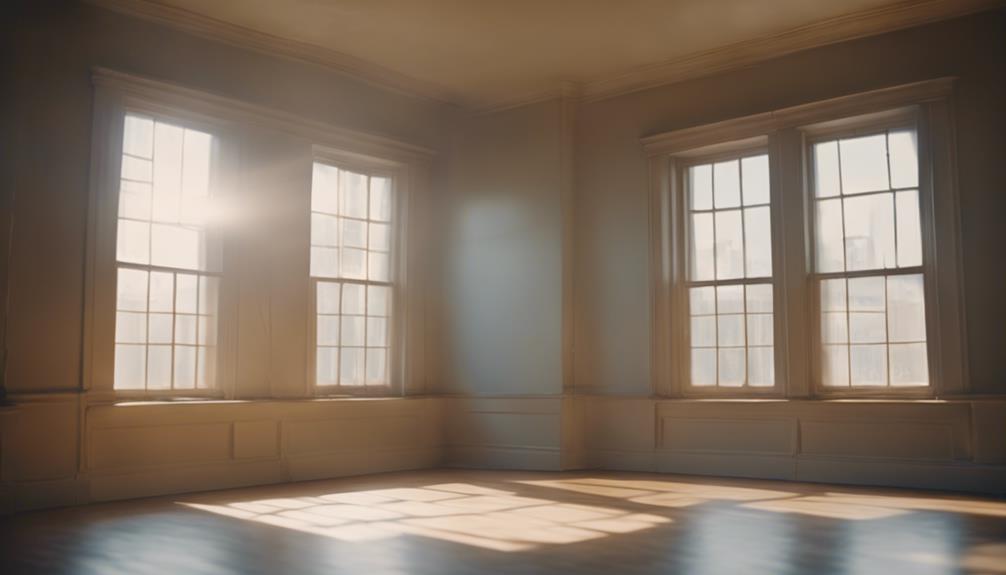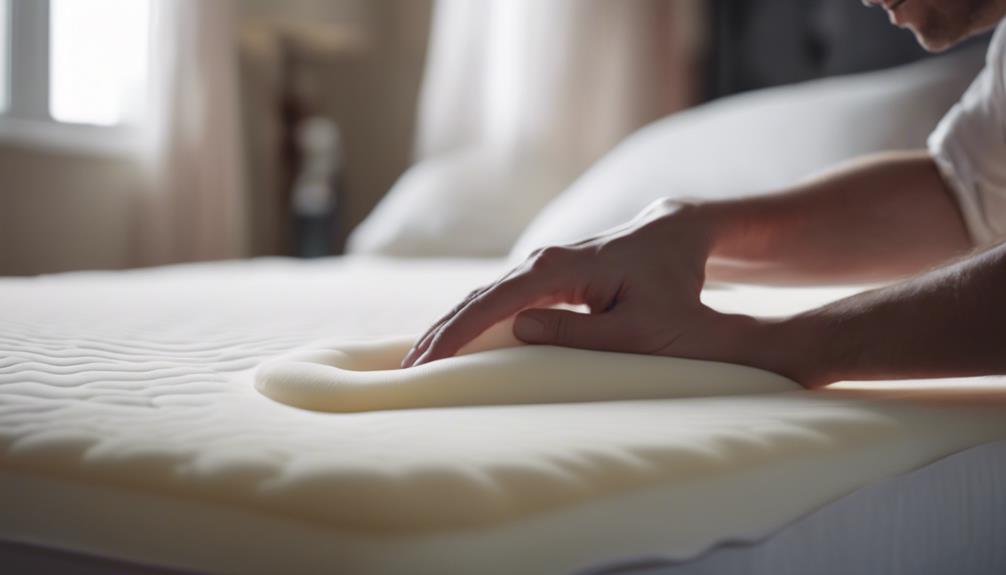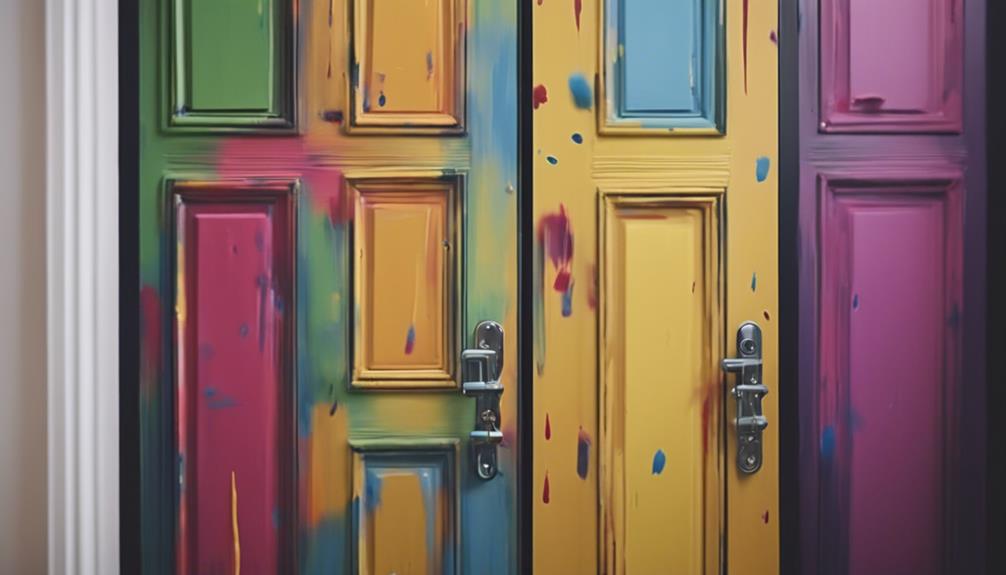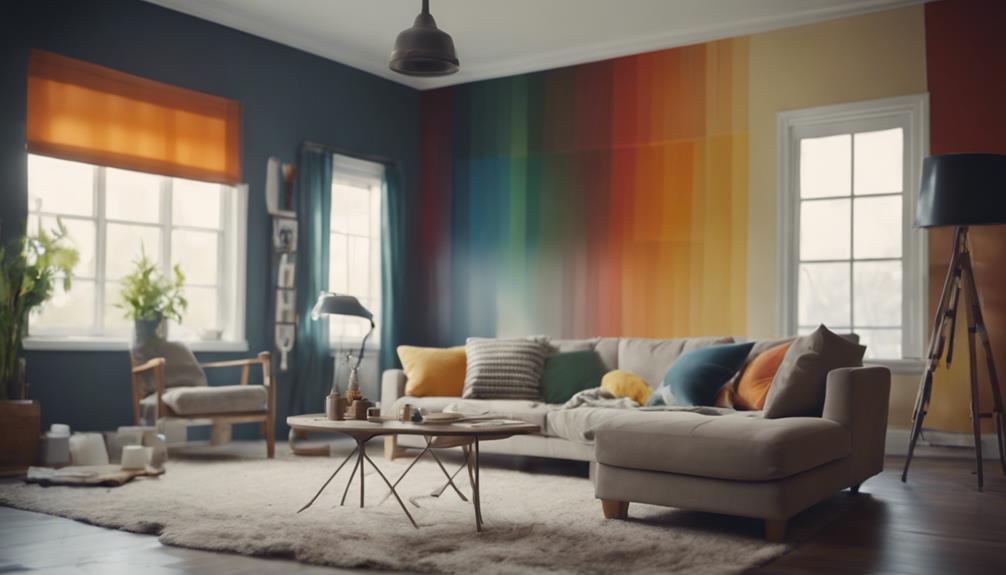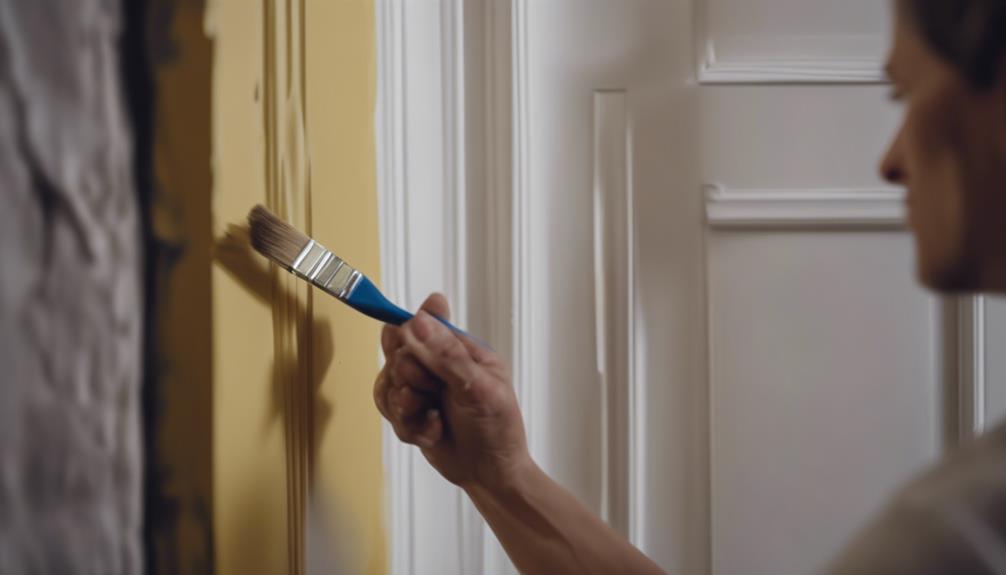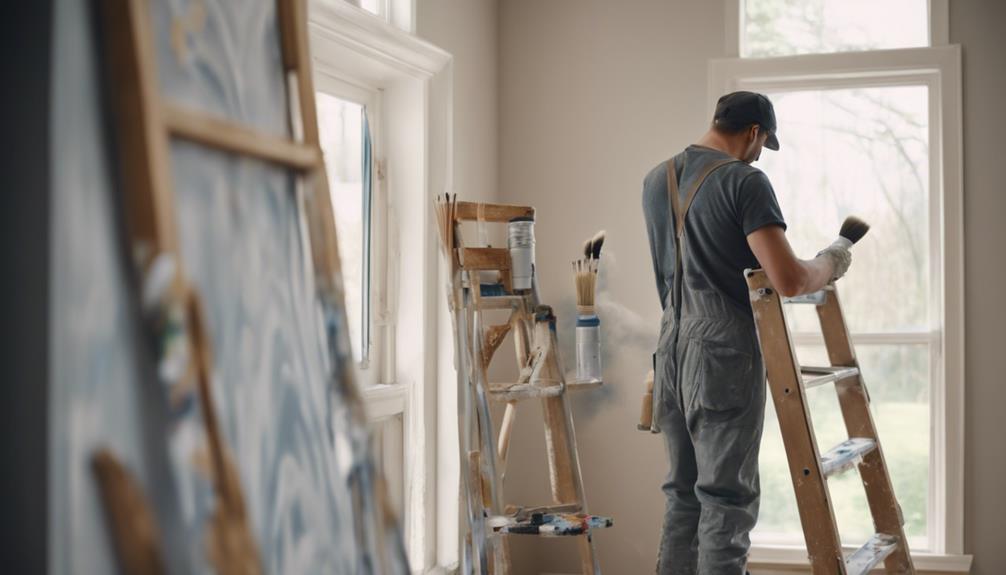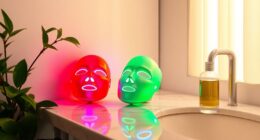You should paint the interior of your home when you notice fading paint, wall damage, or if your style has changed. Repainting can refresh your space and increase its appeal, especially if you plan to sell. Choosing new paint colors to match your furniture and decor is essential. Proper wall preparation guarantees a lasting finish, so cleaning and priming are vital. Consider professional painting services for expertise and efficiency. By maintaining painted surfaces regularly, you can prolong the life of the paint. Addressing these factors will enhance your space and its market value. Further details provide valuable insights to assist your painting project.
Key Takeaways
- Faded or damaged paint signals the need for repainting.
- Changing personal style or design trends may prompt a repaint.
- Repaint before selling to boost property value and appeal.
- Consider sunlight, style, trends, and mood for color selection.
- Proper wall preparation ensures a lasting, professional finish.
Signs It's Time to Repaint
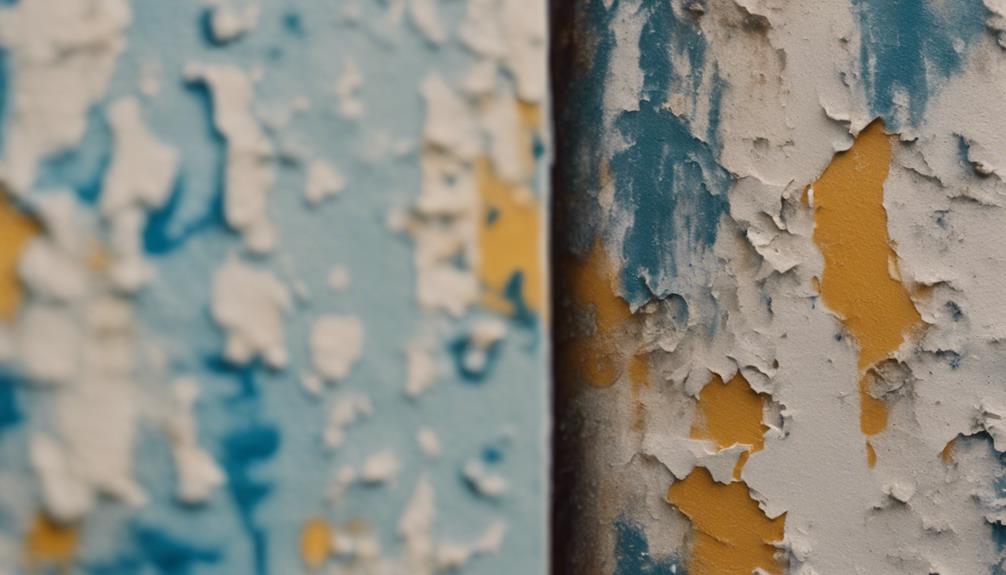
Are you noticing fading paint, especially in darker shades, on your interior walls? Fading paint is a clear indicator that it's time to repaint. Over time, exposure to sunlight and general wear and tear can cause the paint to lose its vibrant color, making your walls look dull and worn. Additionally, damaged walls with scuffs, chips, holes, or missing paint not only detract from the overall aesthetics of your space but also indicate that a fresh coat of paint is needed to restore the appearance of your walls.
When your walls start showing signs of fading or damage, addressing these issues promptly is crucial to maintain a visually appealing interior. By repainting your walls, you can revitalize the look of your space and create a more inviting atmosphere. Keep an eye out for these signs of wear and tear to make sure that your walls always look their best.
Impact of Style Changes
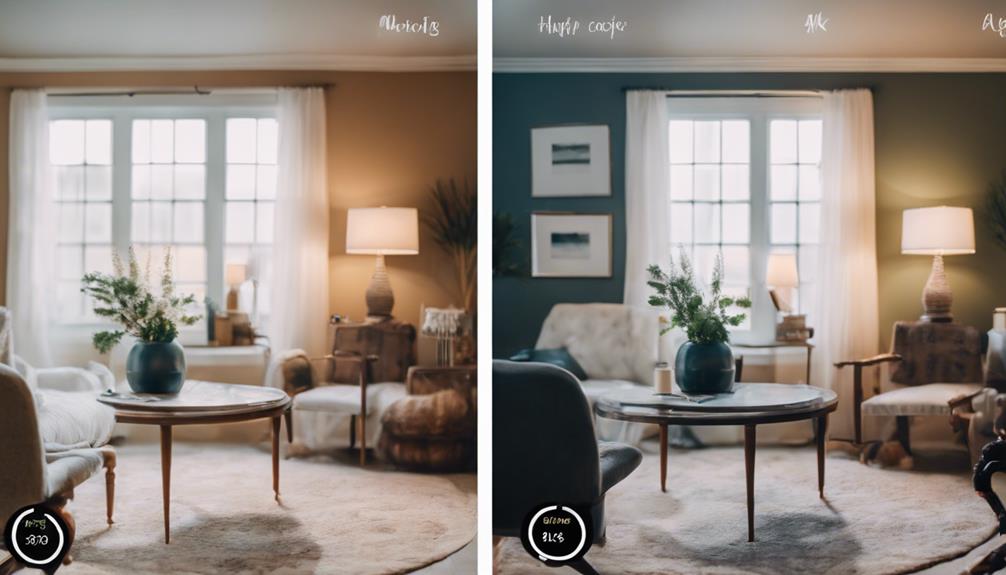
When your personal style changes, it might be time to repaint your interior walls to align with your evolving tastes.
Trends in interior design can also inspire you to contemplate painting your walls in a different color or finish.
Updating the paint can have a significant impact on the overall look and feel of your space.
Style Evolution
Style changes over time shape interior design choices and color preferences, reflecting evolving trends in home decor. Updating your interior paint color can truly transform a space and bring it up to date with modern aesthetics.
Here are some key points to ponder when contemplating style evolution in your home:
- Personal style changes influence interior design choices.
- Trends in home decor impact paint color preferences.
- Modern aesthetics inspire updated paint choices.
- Historical design eras can spark a desire for new paint colors.
- Adapting to current design trends through paint selection enhances the appeal of a room.
Design Refresh
Considering the impact of evolving style changes, updating your interior design through a new coat of paint can greatly enhance the overall look and feel of your space.
Repainting to reflect updated styles is crucial to maintain a cohesive design that aligns with current trends and personal preferences.
A design refresh with new interior paint colors can transform the ambiance and aesthetics of a room, breathing new life into your living environment.
As styles and preferences evolve, it may be important to repaint periodically to guarantee that your interior remains visually appealing and up to date.
Benefits of Repainting Before Selling
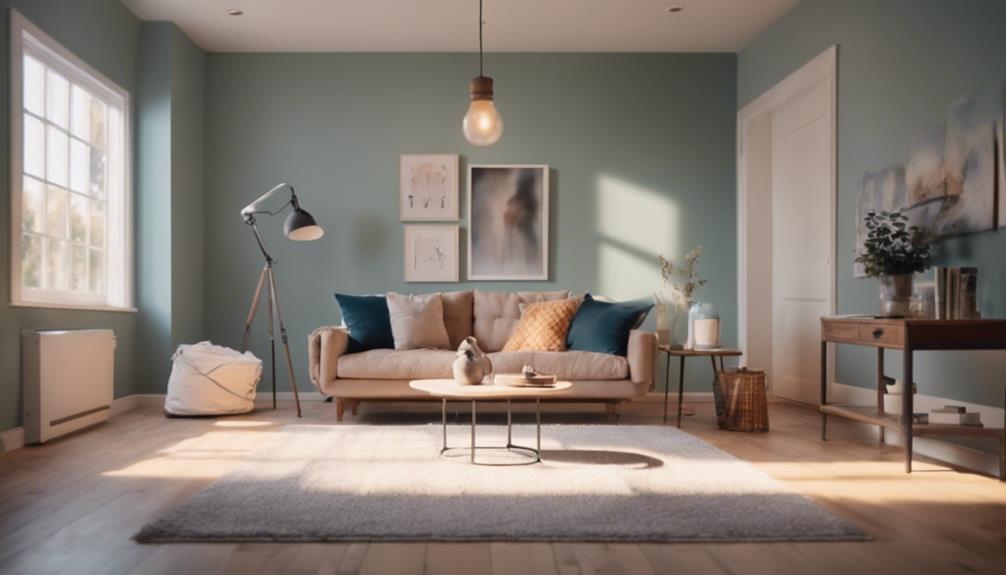
Repainting your interior before selling your house can greatly enhance its market appeal and potentially increase its selling price. Here are some key benefits of repainting before putting your house on the market:
- Increased Selling Price: Fresh paint can attract more buyers and possibly lead to higher offers.
- Enhanced Visual Appeal: A newly painted interior can make your home more visually appealing, making it stand out in listings and showings.
- Improved Property Value: A fresh coat of paint can enhance the overall value and curb appeal of your property.
- Depersonalization: Repainting helps to depersonalize the space, appealing to a broader range of potential buyers who may have different tastes.
- Enhanced Marketability: A freshly painted interior makes your home more marketable and attractive to prospective buyers, potentially speeding up the selling process.
Considering these benefits, repainting before selling can be a worthwhile investment to make your house more appealing to potential buyers.
Factors for Choosing Paint Colors
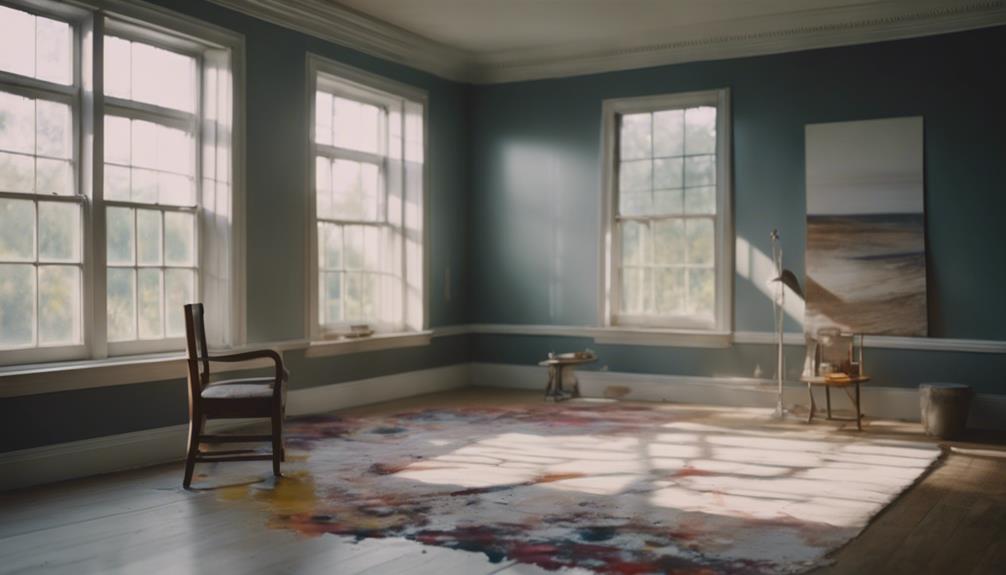
When selecting paint colors for your interior, take into account the exposure to natural light for accurate color perception. Sunlight can affect how colors appear in a room. Darker shades may fade faster, especially with prolonged sunlight exposure, so bear this in mind when choosing your paint color. Your personal style plays an essential role in determining the color palette for your space. Trends evolve, and your preferences may change over time, prompting updates in paint colors. To emphasize these points further, refer to the table below:
| Factors to Consider | Examples |
|---|---|
| Sunlight Exposure | Bright rooms may benefit from cooler tones to balance natural light. Darker rooms might require warmer hues to create a cozy feel. |
| Personal Style | Modern and minimalistic styles might favor neutral tones. Bold and eclectic tastes could lean towards vibrant or deep colors. |
| Paint Color Selection | Consider how different shades will complement existing furniture and decor in the room. Ensure the chosen color reflects the mood you want to create. |
Considering these factors will help you choose the perfect paint color to enhance your space according to your preferences and lighting conditions.
Importance of Wall Preparation
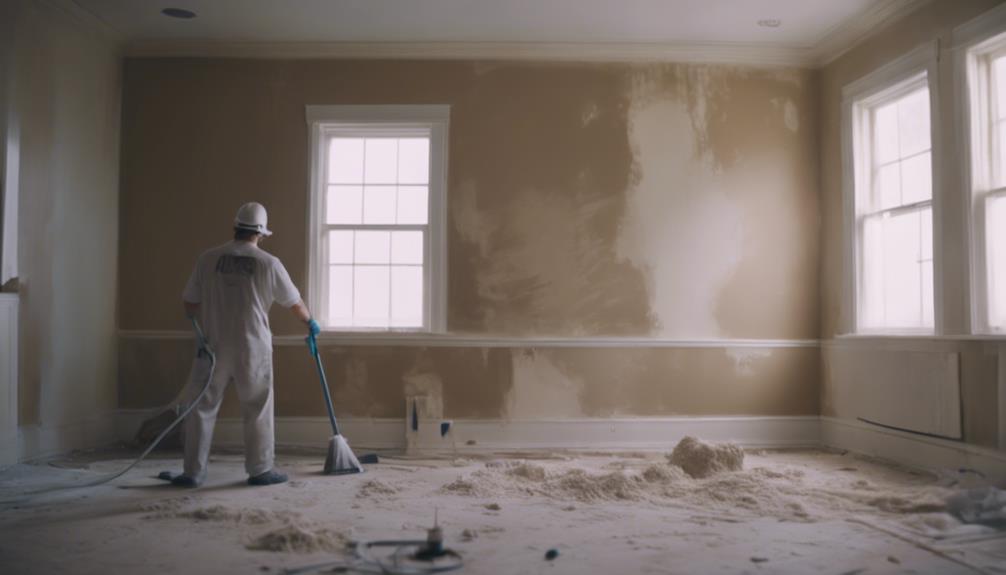
Properly preparing your walls before painting is essential to achieve a smooth and durable finish. When it comes to painting your interior walls, taking the time to prepare them correctly will make a significant difference in the final outcome. Here are some important reasons why wall preparation is vital:
- Ensures Long-Lasting Finish: Proper wall preparation guarantees that your paint job will last for years to come.
- Removes Dust and Debris: Cleaning your walls before painting eliminates any dirt or debris that can impact how well the paint sticks.
- Filling Cracks and Sanding Rough Spots: These steps help create a seamless surface for painting.
- Priming the Surface: Priming helps the paint adhere better and provides a more even finish.
- Prevents Paint Problems: Skipping wall preparation can lead to issues like peeling, bubbling, or an uneven paint job. Investing time in proper surface preparation saves you time and money in the long run by avoiding these problems.
Impact of Seasonal Changes
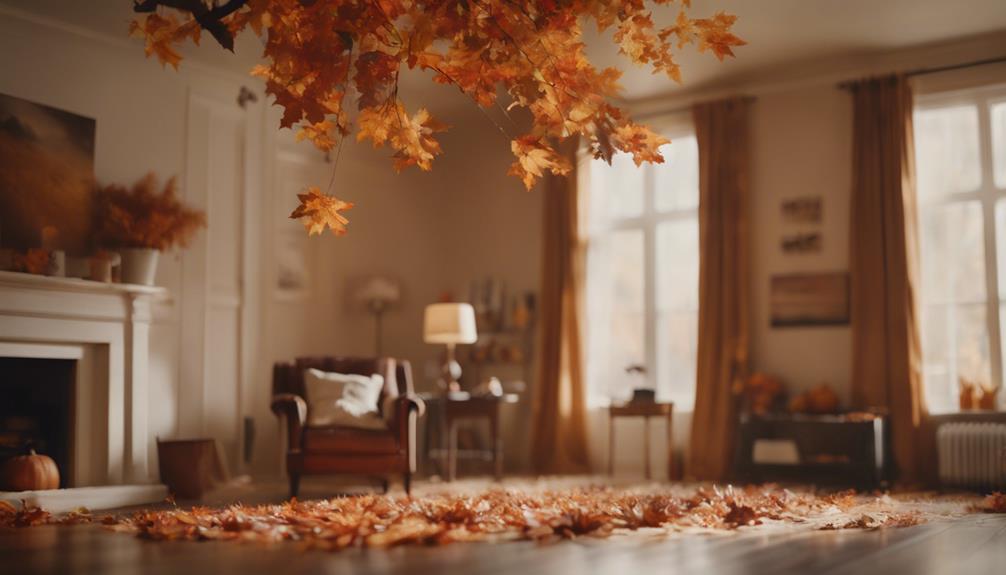
When planning your interior painting project, keep in mind that seasonal changes can impact the outcome. Best painting conditions are found in spring and fall, with moderate temperatures and ideal humidity levels.
Avoid extreme heat or cold to guarantee a successful paint application inside your home.
Weather and Paint
During winter, the cooler temperatures and dry air create ideal conditions for interior painting, promoting faster drying and a smoother application process. Here are some key points to keep in mind when painting in winter:
- Cooler temperatures lead to faster paint drying.
- Dry air helps prevent premature peeling of paint.
- Low humidity levels minimize moisture-related problems.
- Painting in the morning between 8 a.m. and 12 p.m. is recommended for quicker drying.
- Reputable painting companies prioritize safety by selecting paints suitable for cold weather conditions.
Winter weather can actually work in your favor when it comes to interior painting, providing favorable conditions for a successful paint job.
Temperature Considerations
Enhance your interior painting projects by taking advantage of seasonal temperature changes. When considering temperature for interior painting, choose winter for its cooler temperatures and dry air, allowing paint to dry quickly and produce better results.
Avoid extreme heat or cold as they can impact the outcome negatively. Spring and fall are also favorable seasons due to their moderate temperatures and humidity levels. Consider natural light exposure to perceive colors accurately during indoor painting.
Painting indoors during ideal weather conditions can improve the overall paint application process. By aligning your interior painting projects with the right temperatures throughout the seasons, you can achieve excellent results and a successful outcome.
Professional Painting Services Benefits
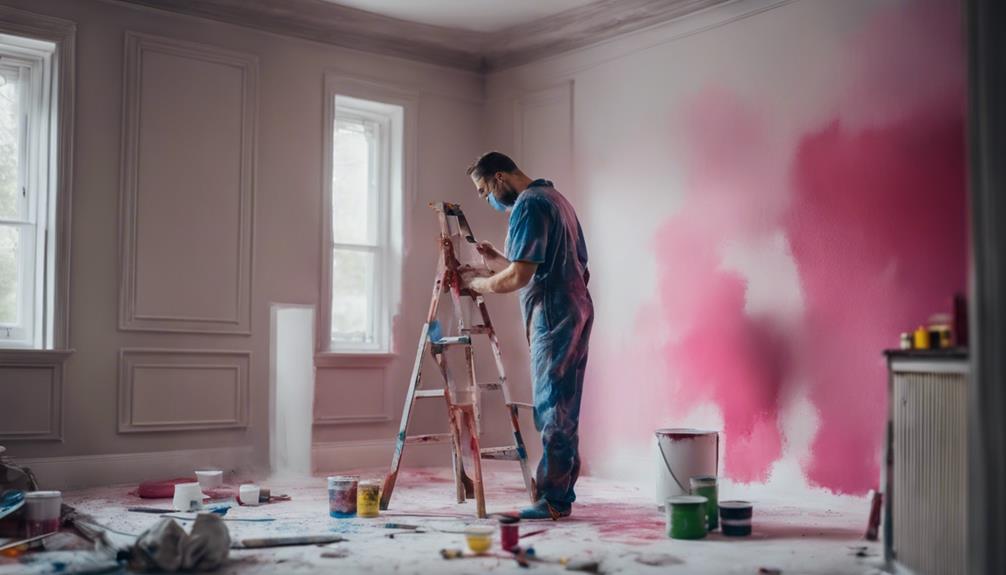
To enhance the quality and efficiency of your interior painting project, consider the invaluable benefits of professional painting services.
When you hire a professional painter, you benefit from their expertise in color selection, paint types, and application techniques, ensuring the best results with your interior paints. Experienced painters can efficiently complete projects, saving you time and effort. They also guarantee proper surface preparation, leading to a smooth and long-lasting paint finish.
By using high-quality materials and tools, professional painters achieve a polished look that enhances your space. Additionally, professional painting services provide peace of mind with guaranteed workmanship and a hassle-free painting experience.
- Expertise in color selection and paint types
- Efficient project completion
- Proper surface preparation for lasting finish
- Use of high-quality materials and tools
- Guaranteed workmanship and peace of mind
Enhancing Home Value Through Painting
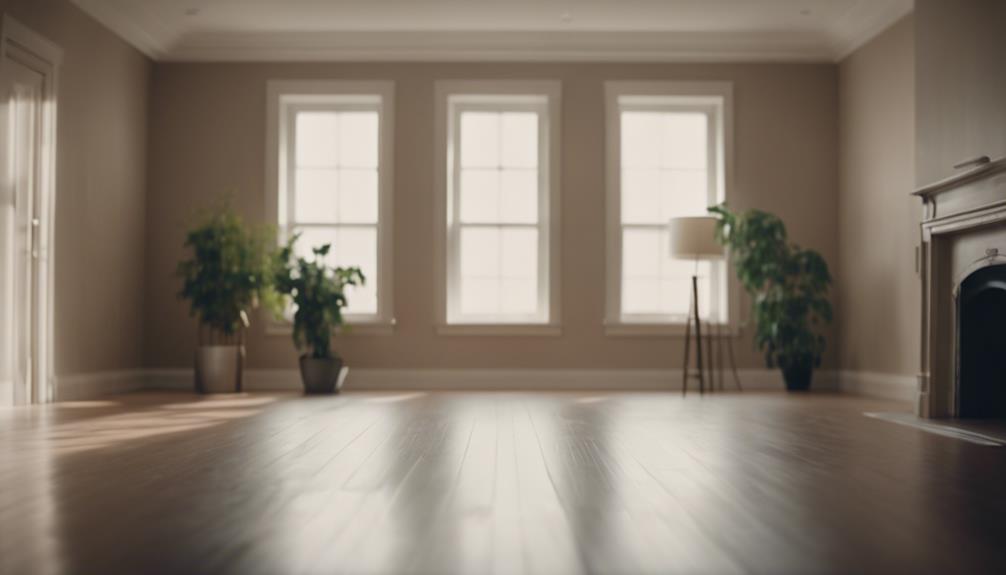
Enhance your home's value greatly by painting the interior walls before listing it for the spring market. A fresh coat of paint can increase your home's value by up to 107%, attracting more potential buyers and potentially leading to a higher selling price.
Repainting damaged walls not only addresses imperfections but also elevates the overall aesthetic appeal of your home. A well-maintained interior with freshly painted walls enhances the curb appeal, making your property more attractive to buyers.
DIY Vs Professional Painting
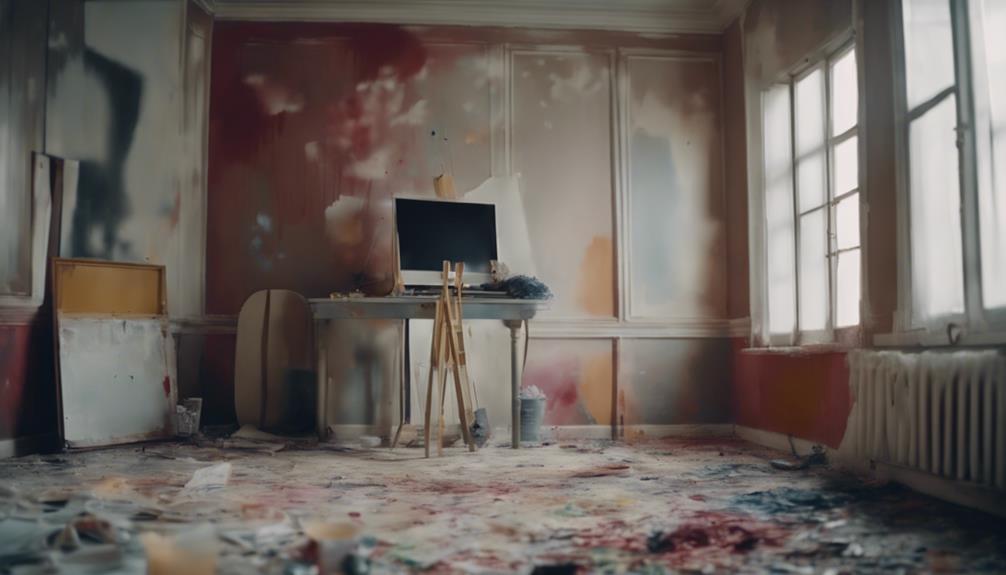
When deciding between DIY and professional painting, consider the cost savings of DIY, ranging from $200-$600 for supplies compared to $2,000-$6,000 for professionals.
Think about the trade-off between quality and speed; professionals offer expertise in surface preparation and finishing techniques, while DIY may take longer and lack finesse.
Evaluate the tools and expertise needed; professionals provide warranties, guaranteeing satisfaction, while DIY may result in uneven coverage and potential rework.
Cost of DIY
Wondering if DIY interior painting is a cost-effective option compared to hiring professional painters?
DIY interior painting costs much less than hiring professionals, with an average cost of $200 to $600 for a room compared to $1,000 to $3,000 when done professionally. Here are some key points to take into account:
- DIY painting allows for customization and flexibility in choosing paint colors and techniques.
- Professional painters guarantee high-quality results but come at a higher cost.
- DIY painting can fit personal preferences and budget constraints.
- Professional painters provide expertise, efficiency, and convenience for complex projects.
- DIY painting requires upfront purchase of materials and tools, while professionals include these costs in their fees for a hassle-free experience.
Quality Vs Speed
Seeking a balance between quality and speed in interior painting, do DIY methods measure up to the efficiency and expertise of professional painters?
Professional painters typically deliver superior results due to their experience, expertise, and use of professional-grade tools. While DIY painting projects offer cost savings, they may lack the finesse of professional work and take longer to complete.
Professional painters can efficiently handle interior painting projects, ensuring a high-quality finish in less time. On the other hand, DIY painting requires meticulous preparation, technique, and attention to detail to achieve results comparable to professional standards.
Hiring professional painters guarantees a quicker turnaround for interior painting projects while maintaining an exceptional quality level.
Tools and Expertise
For best results in interior painting projects, considering the tools and expertise available is crucial when deciding between DIY and professional painting methods. When weighing your options, here's what to keep in mind:
- Professional painters have the expertise to guarantee a high-quality finish and efficient completion of the project.
- DIY painting may save money upfront, but professional painters have access to superior tools and equipment.
- Professional painters can offer advice on color selection, paint types, and techniques based on experience.
- DIY painting requires investing in tools like brushes, rollers, drop cloths, and paint sprayers for the best results.
- Professional painters can efficiently handle prep work, such as cleaning, sanding, and priming, to achieve a flawless paint job.
Maintaining Painted Surfaces
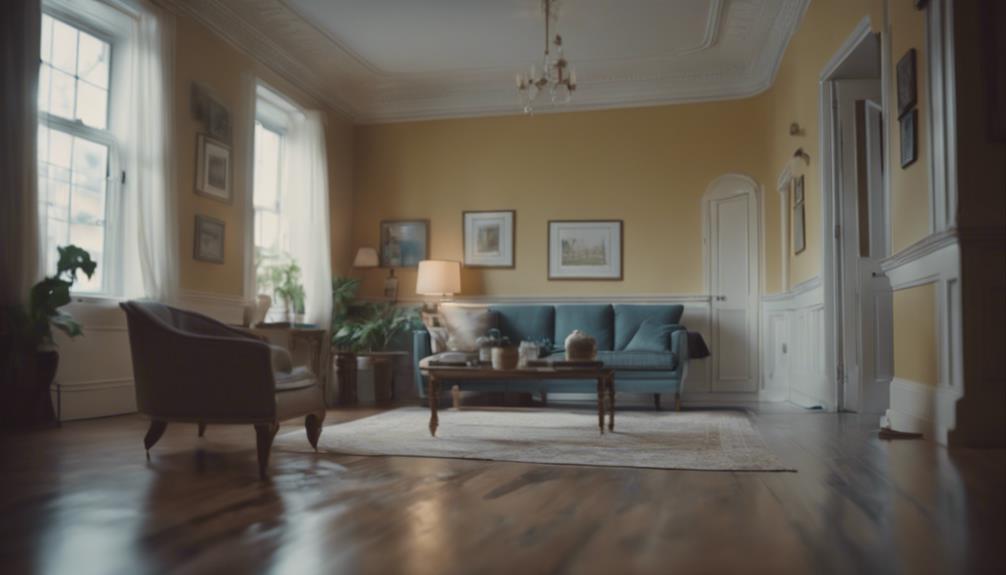
To guarantee the longevity and appearance of your painted surfaces, regular cleaning with a mild detergent and water is essential. Walls that are painted require maintenance to keep them looking fresh and vibrant. Touch up any areas where the paint has chipped or scratched to prevent further damage and maintain a smooth surface.
It's important to use a high-quality paint that's durable and easy to clean, ensuring that your walls stay looking great for longer periods. Keep an eye out for signs of wear and tear, such as peeling or fading, so you can address them promptly. Consider applying a clear coat or sealer over painted surfaces for added protection against everyday wear and tear.
Frequently Asked Questions
What Is the Best Time to Paint a House Interior?
The best time to paint a house interior is when weather conditions are moderate. Avoid extreme heat or cold for successful outcomes. Consider natural light exposure for accurate color perception. Choose dry weather for best application and drying.
Your decision on when to paint indoors greatly impacts the success and longevity of the paint job. Timing is important to guarantee a job well done and lasting results.
When Not to Paint Indoors?
When not to paint indoors?
Avoid painting during high humidity or extreme temperatures to prevent issues like bubbling or poor drying.
Don't paint in poorly ventilated or dusty areas to avoid health risks and guarantee a clean finish.
Also, skip painting in rooms with high moisture levels to prevent mold growth under the paint.
Follow these guidelines for a successful indoor painting project.
What Temperature Should It Be to Paint Indoors?
To paint indoors, aim for temperatures between 60-80 degrees Fahrenheit for the best results. Avoid extreme temps below 50 or above 85 degrees, as they can mess with paint quality.
Consistent room temp is key for good paint adhesion and finish. Cold below 50 degrees slows drying, causing delays between coats.
Also, control humidity at 40-60% to prevent paint issues like bubbling or cracking indoors.
Is It Okay to Paint Interior Walls in the Winter?
Painting interior walls in winter is definitely okay! You can take advantage of faster drying times and cost savings during this season. Professional painters often have more availability and offer reduced rates in winter.
The cool temperatures and dry air help paint dry evenly and prevent issues like premature peeling. Choose low-to-zero VOC paints for the best results.
Painting in the morning between 8 a.m. and 12 p.m. can lead to better and faster drying.
Conclusion
To sum up, knowing when to paint the interior of your home can make a big difference in its overall appearance and value. Keep an eye out for signs that it's time to repaint, consider style changes, and think about repainting before selling.
Whether you choose to DIY or hire professionals, proper preparation and maintenance are key to keeping your painted surfaces looking fresh and inviting. Don't underestimate the power of a fresh coat of paint to transform your space.
